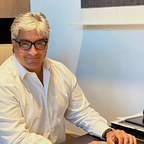It’s time for the home of the future.
People around the world have been spending more time at home than ever before due to COVID — and using their space in entirely new ways. For some, that may mean creating a home office, for others a school in the basement, and there are those who merely need a calming sanctuary.
And while these needs were borne out of necessity, the habits and preferences we developed over the past 15+ months may stay with us long after COVID restrictions are lifted. They’re also playing an important role in shaping the future of residential real estate.
In recent years, there has been a rise in demand for sustainable architecture — which aims to balance the efficiency of a building or home’s operations with its impact on the planet. And while this type of construction has always taken into consideration factors like greenhouse gas emissions, there is now an increased interest in improving the health of the home’s inhabitants — such as innovative ways to improve air and water quality.
For proof that this is becoming a top-of-mind concern for consumers, look no further than the shelves of Ikea. The home furnishing giant recently launched the VINDRIKTNING air quality sensor. For just $12, anyone can monitor the presence of PM2.5 particles in their home. However, if air quality is found to be poor, the occupant will need to take extra steps to improve it (by purchasing an air purifier, for example). Imagine the benefits that could be reaped if all of these capabilities were built into the home itself?
There are also great advances being made in sustainable building materials, like self-healing, bacteria-based concrete. When damaged, this concrete is able to regenerate, much like how skin scabs over — eliminating the need to create and dispose of additional concrete. I know this sounds like sci-fi, but it may soon be used to build homes and sidewalks.
And, as homes now have to support individuals and families as they live, work, and more, the standard for what constitutes “smart” technology keeps getting higher. Now, consumers are looking for ways that their house can make their lives easier. For example, being able to connect their security system, thermostat, and lights to their phone — allowing them to control their homes from the palm of their hands, even when they aren’t there.
For investors, these trends are creating great opportunities. Now, the features that were once seen as an upsell are now considered to be the minimum standard. And, as consumer consciousness and technology continue to evolve, so will the demand for smarter, more sustainable homes.
The future is here, and it is time to start building for it.
Danilo Diazgranados is an investor, collector, and lover of fine wines and a member of the prestigious Confrérie des Chevaliers du Tastevin, a fraternity of Burgundy wine enthusiasts.
